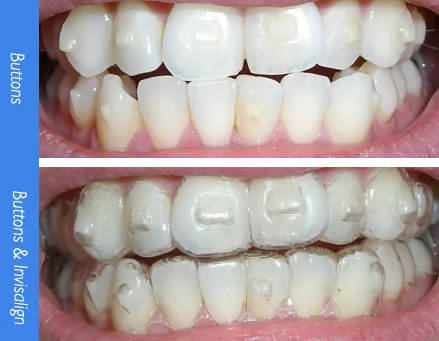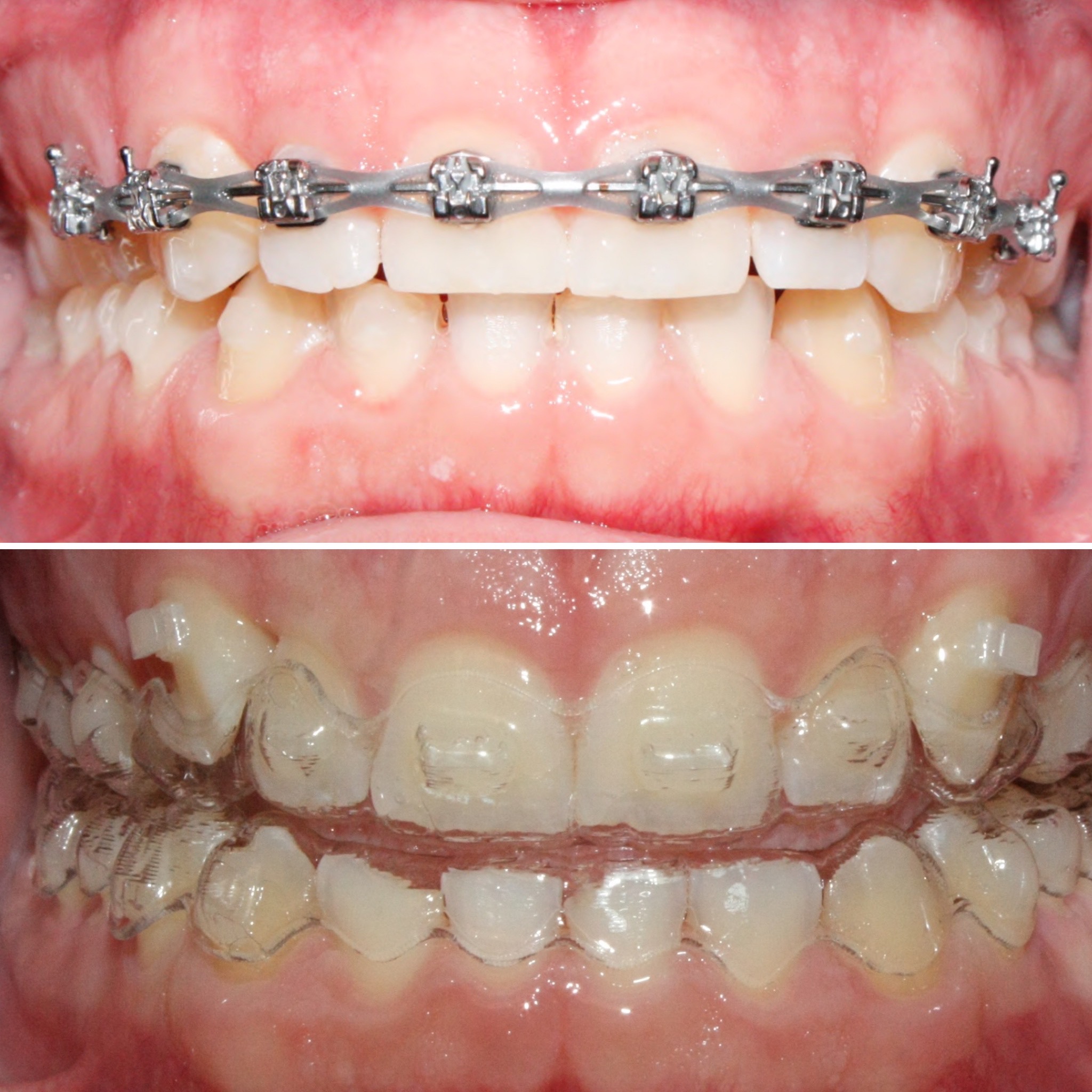Frequently Asked Questions Concerning Invisalign: Everything You Required to Know
Frequently Asked Questions Concerning Invisalign: Everything You Required to Know
Blog Article
Invisalign vs. Standard Braces: Which Alternative Is Right for You?
When thinking about orthodontic treatment, the selection in between Invisalign and traditional dental braces provides several vital aspects that merit mindful assessment. Invisalign offers a very discreet option with detachable aligners, while typical braces provide a much more noticeable yet efficient remedy for serious imbalance. Each option includes distinct benefits and downsides associated with looks, convenience, treatment period, and price. Comprehending these subtleties is essential for making an educated decision that lines up with your individual choices and lifestyle. The concern continues to be: which option will finest satisfy your orthodontic needs and expectations?
Introduction of Therapy Alternatives

On the other hand, conventional dental braces are composed of metal brackets and cords that are adhered to the teeth. This method uses continual pressure in time to attain alignment. While effective for complicated orthodontic concerns, traditional braces need normal check outs for changes and can pose obstacles in keeping oral health as a result of the trouble of cleaning around cables and brackets.
Both alternatives have their advantages, and the option often hinges on particular dental problems, way of living preferences, and patient conformity. Ultimately, getting in touch with an orthodontic specialist is essential for determining one of the most ideal treatment strategy customized to private needs. Understanding the subtleties of each alternative can considerably influence the general success of orthodontic treatment.
Aesthetic Considerations
A substantial aspect affecting the option between Invisalign and conventional dental braces is the visual appeal each treatment provides. Invisalign aligners are crafted from clear plastic, making them basically unnoticeable when put on.
In comparison, traditional braces contain metal braces and cords, which can be much more recognizable. While improvements in orthodontic modern technology have caused the development of smaller brackets and tinted elastics, traditional braces still preserve an even more conspicuous profile. For some people, the visibility of braces may hinder them from seeking required therapy.
Inevitably, the choice between Invisalign and conventional dental braces might pivot on personal preferences pertaining to looks. Patients who prioritize discretion typically lean towards Invisalign, while those that are much less worried about visibility may go with conventional dental braces. Comprehending the visual effects of each alternative is critical for making an informed choice that straightens with one's lifestyle and choices.
Convenience and Convenience

In terms of benefit, Invisalign aligners are removable, allowing individuals to appreciate their favored foods without constraint and keep optimum dental health. Cleaning and flossing are simplified, as the aligners can be gotten during these routines, whereas traditional dental braces call for mindful steering around braces and cables.
In contrast, typical braces necessitate normal adjustments, making them much less convenient for those with active routines. Overall, the convenience and convenience of Invisalign make it an enticing choice for lots of individuals looking for orthodontic treatment.
Therapy Period and Efficiency
While both Invisalign and traditional braces are reliable in fixing oral misalignments, the duration read of therapy can vary substantially in between the two alternatives. Usually, Invisalign therapy can take anywhere from 12 to 18 months, depending on the complexity of the instance. The clear aligners function by gradually moving teeth right into their desired settings, and normal follow-ups with an orthodontist aid guarantee development remains on track.
In contrast, conventional dental braces commonly require a longer commitment, normally varying from 18 months to 3 years. This results from their set nature and the usage of brackets and wires, which can be a lot more reliable for extreme misalignments and complicated instances (Invisalign). The therapy efficiency of standard dental braces is well-documented, as they permit for specific changes and better control over tooth activity
Ultimately, the choice between Invisalign and conventional braces may hinge on both the anticipated therapy period and the specific dental concerns handy. Consulting with an orthodontist is critical, as they can provide customized recommendations based upon specific demands, making certain the picked technique lines up with desired results and timeframes.
Price Contrast and Insurance Coverage Choices
Expense plays a considerable role in the decision-making procedure for people thinking about orthodontic treatment, whether deciding for Invisalign or standard dental braces. On standard, the cost of Invisalign arrays from $3,000 to $8,000, while standard braces typically set you back in between $2,000 and $6,000. Elements affecting these expenses include the intricacy of the case, the period of treatment, and geographical area.
Insurance policy coverage can significantly affect out-of-pocket expenses. Several dental insurance strategies provide partial insurance coverage for orthodontic treatments, yet the specifics can vary commonly. It is essential for patients to examine their insurance coverage to determine the degree of coverage for either choice. Generally, standard braces may be a lot more frequently covered by insurance coverage strategies compared to Invisalign, which some insurers categorize as an aesthetic treatment.
In addition, numerous orthodontic practices offer flexible settlement strategies, making both therapy options more available. Individuals must make inquiries about prospective financing options and discounts for upfront payments. Assessing the complete cost, including insurance benefits and layaway plan, is essential for making an educated decision that aligns with both aesthetic choices and spending plan factors to consider.

Verdict
In recap, the choice in between Invisalign and conventional dental braces rests on numerous aspects, including visual preferences, convenience, treatment period, and price. Invisalign uses a very discreet, detachable option that promotes oral health and nutritional versatility, while typical braces may be better for complex oral concerns and typically come with a lower cost factor. Eventually, appointment with an orthodontist is necessary to analyze individual situations and establish the most suitable therapy alternative for achieving ideal oral placement.
When considering orthodontic treatment, the option between Invisalign and standard dental braces offers numerous my review here important elements that warrant cautious evaluation.Comparing Invisalign and conventional dental braces exposes distinctive therapy alternatives for orthodontic improvement.While both Invisalign and conventional braces are efficient in remedying oral imbalances, the period of treatment can vary substantially in between more info here the 2 alternatives.Price plays a substantial duty in the decision-making procedure for people considering orthodontic therapy, whether opting for Invisalign or standard dental braces.In recap, the choice between Invisalign and traditional dental braces hinges on several variables, consisting of visual preferences, comfort, treatment duration, and cost.
Report this page